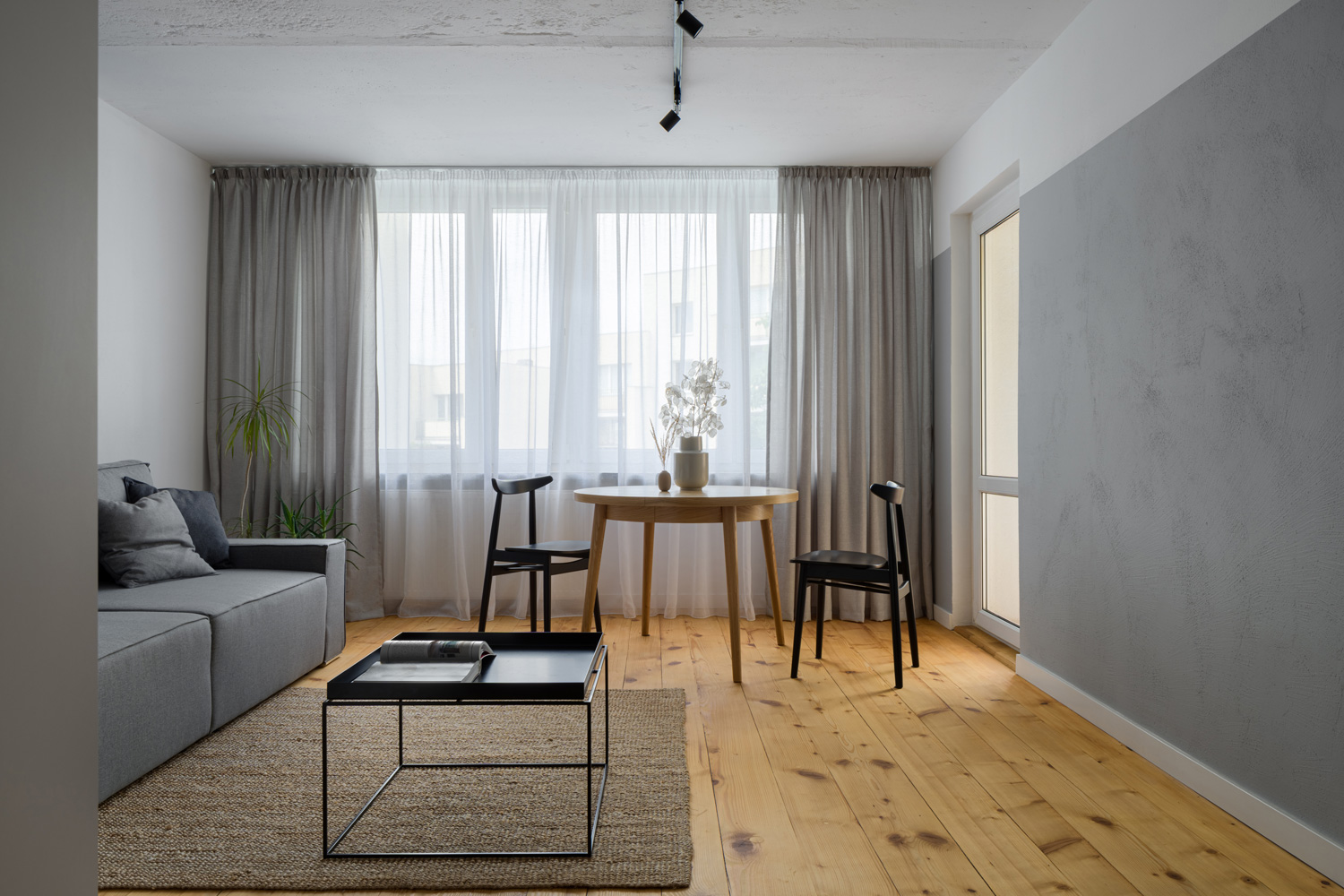Wooden furniture like pine instills a sophisticated and all-natural look to homes. It creates a bright ambiance, especially if well incorporated with the right colors. If you’re wondering whether or not gray walls go with them, you’re in the right place. We researched all the answers to get them to you!
Yes, pine furniture goes with gray walls. Since gray is a neutral color, it harmonizes with the wood hue and texture of pine furniture.
Gray walls and pine furniture are a great combination that creates a cozy and rustic vibe to bedrooms, living areas, and the kitchen. Read further if you want to learn more about this combination.
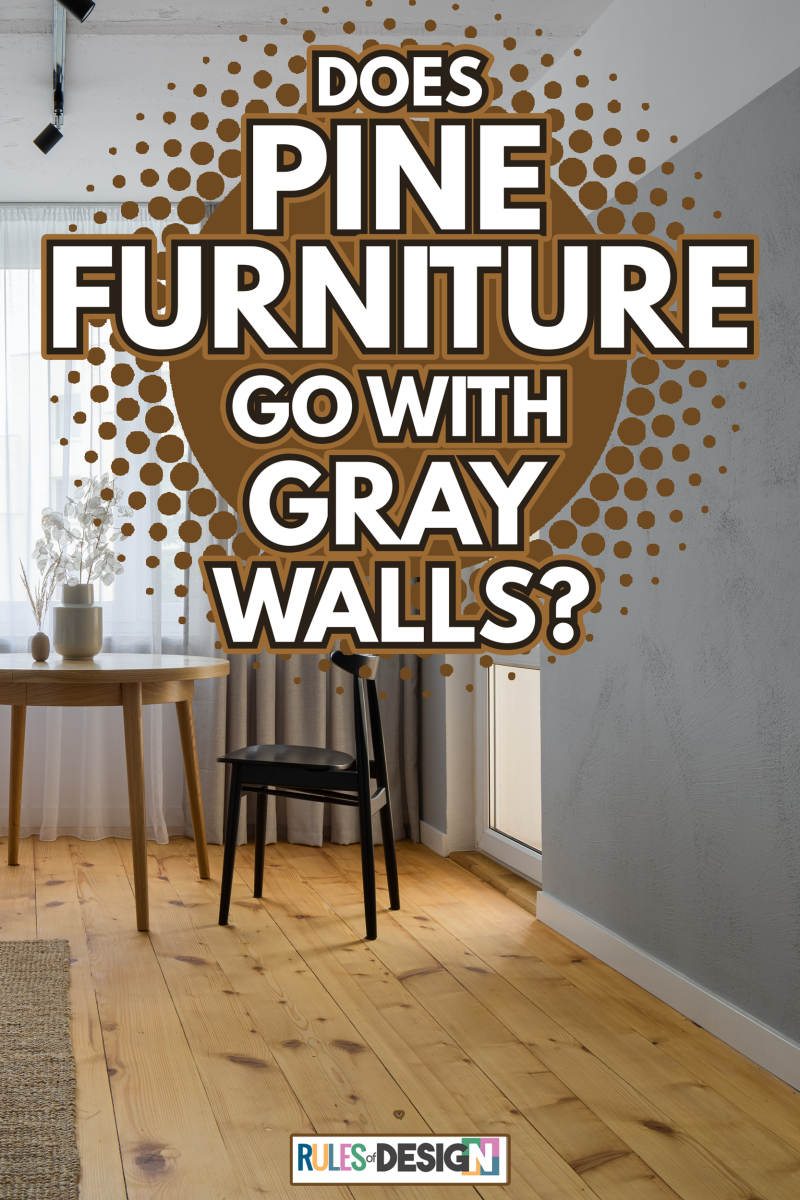
Gray And Pinewood: An Earthy Match
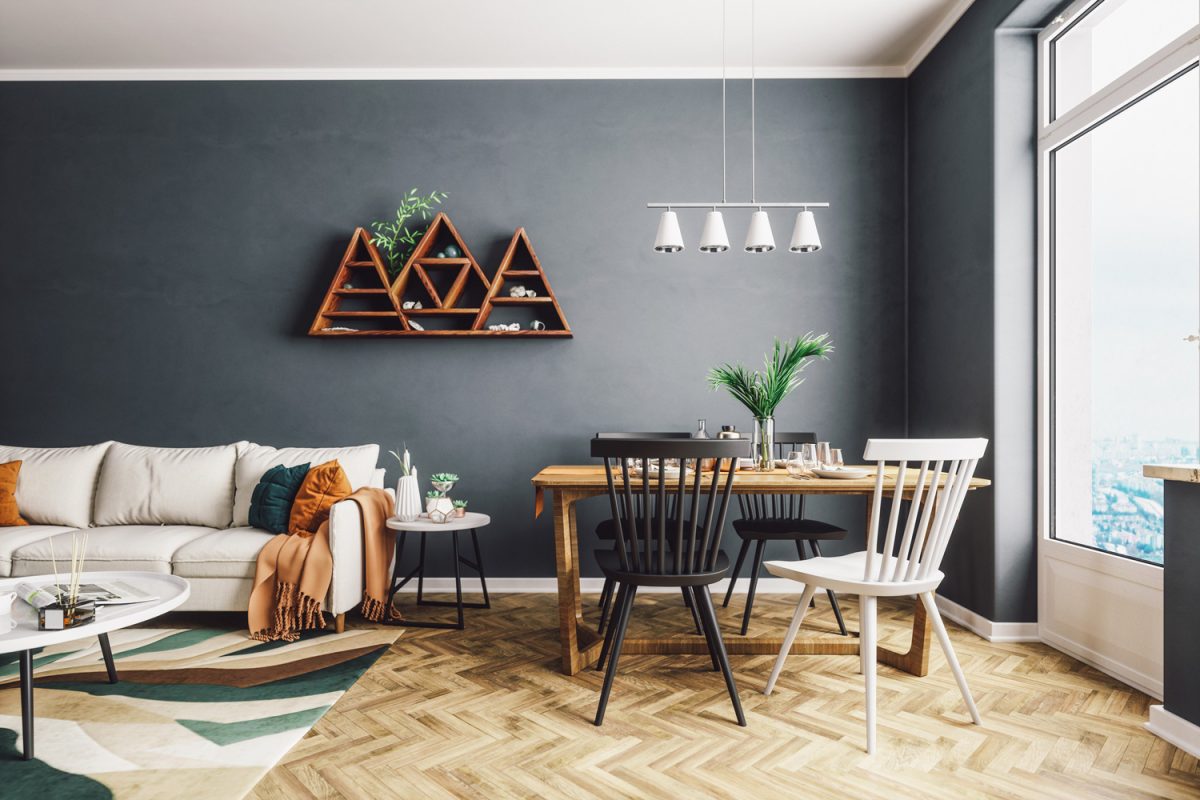
An earthy vibe is what gray and pine would exude together.
Most pine furniture is made out of softwood. It has a light yellow tinge with dark grains and knots that provide a magnificent finish, making each piece of furniture look naturally stunning with different home decor.
On the other hand, gray is a color that adds a touch of softness and sophistication. No wonder why it’s usually applied as a base color to walls because it vividly highlights the colors that it’s paired with.
Gray walls allow the pine furniture’s presence to stand out in any space. It emphasizes its wooden textures and grain, making it visually appealing enough to be appreciated.
One important thing to look out for in this combination is natural light. Light plays a significant factor because it influences the result of how the unique elements will look all in all.
If your space has a southern exposure, it produces a warm light that can brighten the tones of pine furniture and gray walls. When your space has a northern exposure, it receives cool light that can darken the tone of gray walls and pine furniture.
A Guide To Styling Pine Furniture And Gray Walls
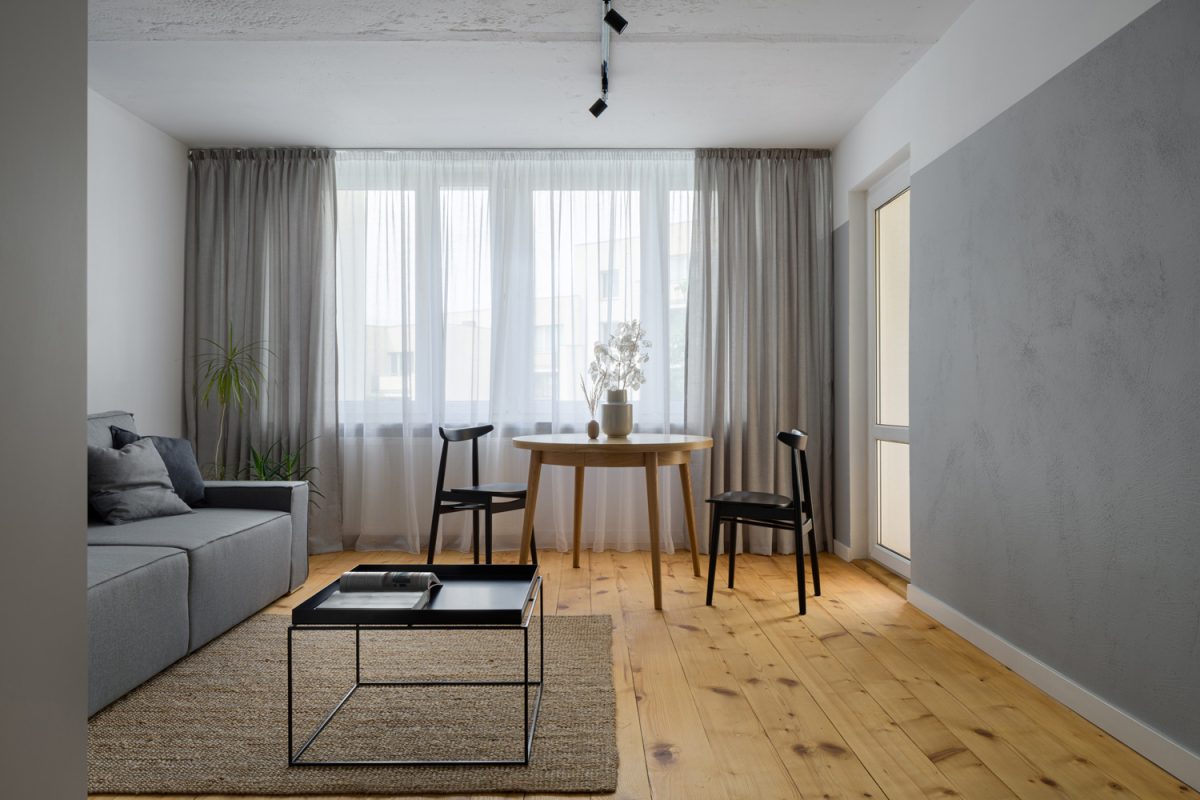
The safest way to style gray walls and pine furniture is to choose a classic color palette. You can go for black, white, and ligther shades of brown as color accents in your area.
You can take this photo of a dining room as an inspiration to incorporate black accents and beige ornaments when designing a kitchen with a pinewood dining table.
The area looks fashionable yet neutral. At the same time, it sustains the right amount of visual balance because the colors blend harmoniously.
For a minimalist look, you can remove a bunch of dark colors that bring too much contrast to the area. Instead of large black cabinet shelves, you can utilize floating shelves that hold enough decor for your space.
See this black floating shelf on Amazon.
If you want to enhance the pine’s rich and warm color, Glidden Paint sugggest that you incoporate it with deep colors like red, orange, mustard yellow, or field poppy.
However, you need to be careful when using these deep colors as they can be at odds with your gray walls. Keep it simple by choosing small decor that have these colors.
You can purchase an abstract painting with bursting orange colors to pair with a pinewood shelf, or you can put shades of yellow and orange on throw pillows to pair with pine bedroom furniture.
Click here to see this throw pillow cover on Amazon.
The key to styling gray walls with pine furnitures is to always combine it with neutral colors like cream and white for a soft, subdued look.
If you want to make a statement by experimenting with other colors, just stick with cool undertones that won’t clash with the pinewood. This means going for colors that are enough to make a room pop without dominating too much.
Mint or pale green accents can also bring life to typical gray walls and pine furniture. You can also add some indoor plants for a more enhanced natural vibe.
Victorian or light blue shades can add a coastal farmhouse vibe to pinewood furniture. This is great if you’re into creating a soothing and beachy mood with your pinewood.
Above all of that, styling an area with gray walls and pine furniture can be quite a challenge. Again, it’s best to stick to neutral color schemes, so you won’t ruin your room’s overall design.
What’s with Pine Furniture?
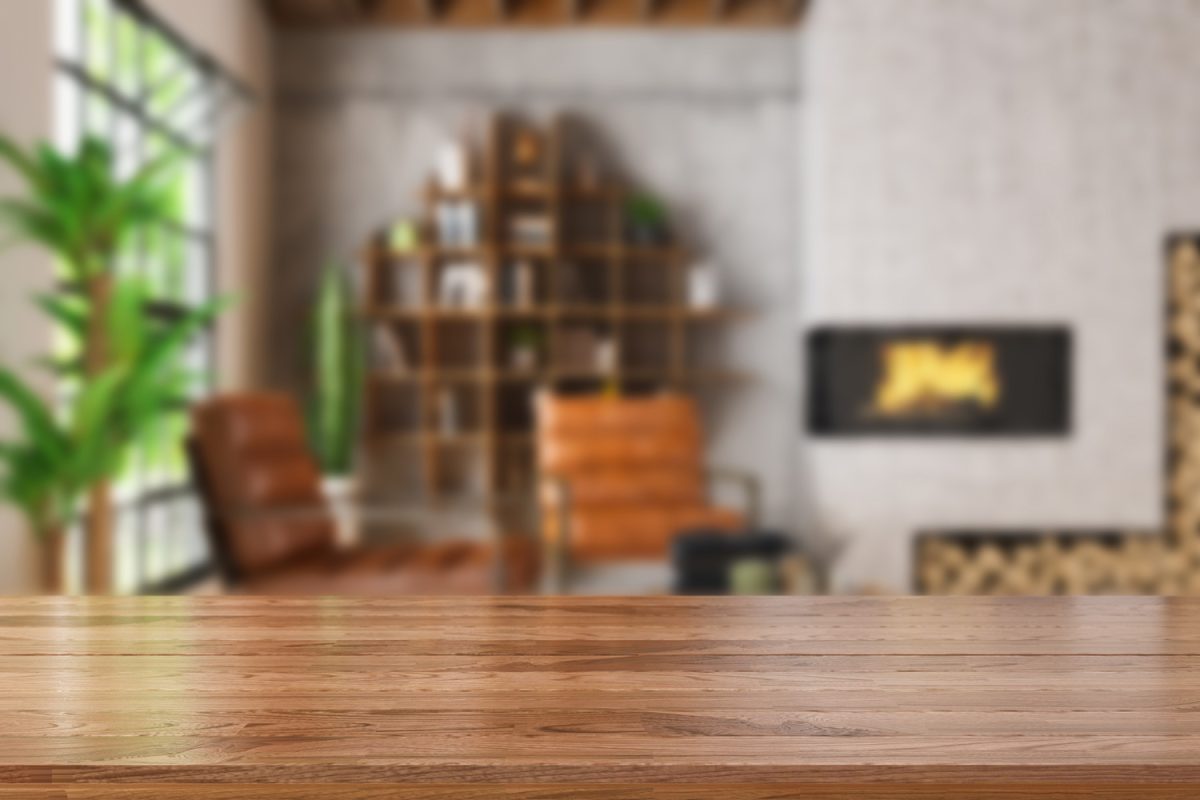
Scientifically known as the pinus genus, pinewood is one of the most popular woods used in manufacturing and carpentry. It’s found in floors, windows, doors, and furniture.
Pinewood is deemed as one of the strongest softwoods by manufacturers and carpenters because of its soft spruce and clean, rustic look. Depending on its characteristics, pinewood’s color can range from pale yellow to beige.
Knowing the advantages and disadvantages that come along with it helps you realize its value and find out what considerations you have to take when owning a piece of pine furniture.
Advantages
- Pinewood is cost-effective and perhaps one of the most affordable options compared to other wood types.
- Pinewoods grow at an incredibly fast pace.
- Since it’s a softwood, it’s naturally flexible and easy to work with.
- Staining and cutting pinewood is easy, so it’s less time-consuming if you plan on doing other DIY projects.
- Pinewood is treated to resist rot and decay.
- Its natural patterns and grains are pleasing to look at, so it’s great for aesthetics.
- Pinewood provides excellent endurance.
Disadvantages
- The treatment that makes pinewood resistant to rot and decay contains chemical preservatives that may be harmful.
- Pinewood has the tendency to swell and shrink in cases of seasonal change.
- The color of pinewood may change when exposed to direct sunlight.
- Pinewood is not considered weatherproof so its quality may change or get affected by changing weather conditions, especially if it’s exposed outdoors.
How Do You Maintain Pine Furniture?
Pinewood furniture can dull and wear over time. To prevent this from happening beforehand, you need daily and seasonal cleaning to keep the furniture looking fresh and new.
Maintaining pinewood furniture is not a difficult task, you can do so with the following techniques:
- Immediately clean up spills on the surface. Leaving them for some time can cause damage to the finish.
- Regulary dust away particles that can dull the surface and create fine scratches.
- Use coasters, mats, or table cloth to protect your pinewood furniture and help the finish last longer.
- Do a seasonal deep cleaning. This means removing all other objects placed on your pinewood furniture (such as books, frames, and other decors). After that, dust and wipe off every area with a cleanser.
- Avoid using plain water or other acidic products. Make use of oil soap wood cleaners to protect your pine furniture’s quality.
- Use soft and lint-free cloths or wool to wipe your pinewood furniture.
- You can occassionally apply a paste wax over pine furniture to keep its integrity.
- Refrain from exposing your pinewood furniture outdoors.
What Other Woods Go Well With Gray Walls?
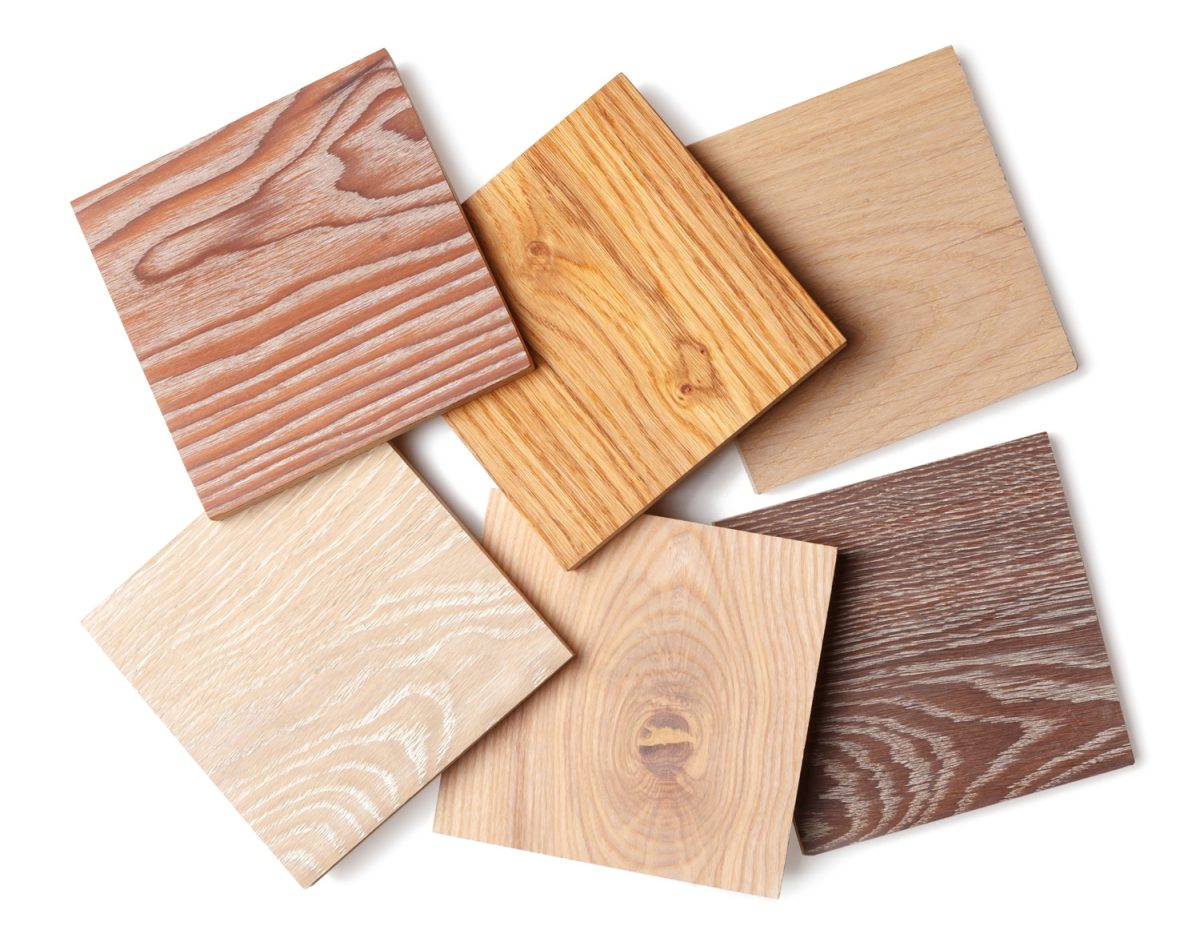
With gray walls, you’ll have a wide range of color selections to complement it. Gray is a neutral color, but underlying tones that match it often determine whether the color is cool or warm.
Gray either has warm red undertones or cool blue undertones. Because of this, the color of wood to be paired with it should be consistent enough to keep the gray look neutral. At the same time, it should stay in coordination with its hue.
Gray walls and wooden furniture don’t always have to match, but they should be in the same color family. Gray walls with dark wooden furniture make the color look lighter while light wooden furniture produces a darker effect on the gray’s color.
Warm-colored woods that go with gray walls are chestnut, walnut, red oak, and cherry since they have intense red and brown tones.
On the other hand, cool-colored woods that complement gray walls include birch, hickory, poplar, ash, and pine as they have red undertones. These wood types go lighter when paired with gray.
Although most woods have warm undertones, the brightness and contrast of the wood significantly impact the gray walls that work with it. Natural light also plays a huge factor as we have discussed above.
Final Thoughts
Gray walls and pine furniture make an incredible match; you just need the right color accents to blend with them.
Now that you’ve read all of our tips, we hope you’ve gained enough confidence and inspiration in combining pine furniture with gray walls. Have fun with your home improvement project!
If you liked this article, you can also check out the following:
6 Best Wall Color Shades For A Living Room With Wood Furniture
What Color Furniture Goes With Gray Walls And Dark Wood Floors?

